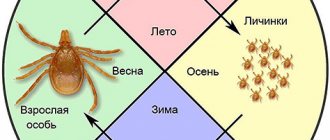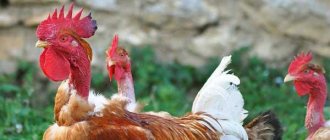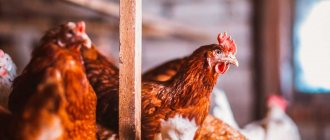2 209
no comments yet
1
Author:
Ryzhakova Evgenia.
Reading time: 2 minutes
Light is not only illumination of the interior of the chicken coop, but also an important nuance for birds, which affects their health and reproduction. If the chicken house is well equipped and lit, the birds will be active, healthy and will produce more eggs or meat, depending on the breed of the chicken coop inhabitants.
24-hour lighting of the chicken coop is categorically not recommended: the birds will not produce healthy offspring, will not be able to gain weight and remain healthy. In the light they rush, and in the dark they rest and grow.
What should be the lighting for the chicken coop?
The physiology of the organ of vision in birds is distinguished by the peculiarity of reacting more sensitively to light. Chickens see perfectly in good light, which cannot be said about the dark, when, due to the lack of ability to navigate in space, the birds stop activity and fall asleep. During the cold season, birds move less, receiving less food and nutrients necessary for normal weight gain and other vital processes. Therefore, it is important to provide additional lighting in the chicken coop.
The bright room is also convenient for people caring for chickens. Lamps with different lighting intensities provide unhindered access to feeders, nests, and allow for high-quality cleaning.
Reference! The light intensity in the area above the feeder should be within 60 Lux, in the corner on the perch and above the nests twilight is needed (0.5-1 Lux).
The number of lamps is calculated depending on the area of the room. If birds are kept in cages, lamps are installed above the passageway. The height of their placement is slightly higher than the heads of the owners or service personnel. This way the devices will not interfere with people moving around the chicken coop. When placing feeders inside cages, you need to think about their lighting system. Otherwise, access to food will be limited.
Important! The height of the lamps in the chicken coop is 1.8-2 m. When choosing the location of the device, the height of the owners is taken into account so that it is possible to replace lamps without the use of ladders and other devices (at arm's length).
Lamps connected to the network must be equipped with shades. This will protect them from dust and moisture during operation. If birds react inadequately to the lamps, which is expressed in the desire to peck them, it is recommended to paint the glass surface of the lamps red or blue.
The easiest way to arrange lighting in a chicken coop involves supplying an electrical outlet and connecting a socket with a lamp. In this case, the owners will have to monitor the switching of the lighting mode every time. It is much more convenient to connect an electromechanical relay and periodically monitor its operation.
What are the benefits of proper lighting?
Proper organization of lighting in the chicken coop regulates the following issues.
- Monitoring of feed consumption.
- Intensive increase in body weight of the bird.
- Reducing the molting period.
- The continuous process of formation of the body of young animals, puberty.
- Increased egg production.
After a thorough analysis of the listed factors, taking into account the characteristics of the breed, a lighting program is selected.
For normal weight gain and increased fertility of chickens, it is necessary to adhere to a stable daylight hours. To do this, it is important to choose the most suitable type of artificial lighting and operating mode of the lamps. However, it is worth considering that the light should not be on around the clock.
How to prepare a chicken coop for winter cold?
The first stage of the insulation process is the selection of a suitable material. The most common are: penoplex; Styrofoam; mineral wool; foil penofol.
The latter option is more budget-friendly, but they all have one function - they retain heat indoors. Which material to choose is a purely individual decision, since their main difference is only in the structure.
The insulation process itself takes place in several stages:
Floor insulation. The bedding layer on the floor can be made of various organic materials. Straw, hay, peat, moss, sawdust and shavings are used for these purposes: they are best suited for floor insulation, are safe, affordable, and after use can be used as fertilizer on the floor. plot. The layer thickness should be at least 20 cm. As the material cakes, it is necessary to add 5-10 cm of filler. A complete replacement of the insulation is carried out at the end of the season.
Insulation of walls. The outside walls are insulated with foam blocks, and on top with plastic sheets or slate. If the climate for keeping birds is harsh, then the inside of the room can be lined with foam blocks.
Insulation of the roof and ceiling. As for the roof, there are no special requirements
It is important that there are no cracks or breaks in it. If there is an attic above the poultry house, it is recommended to lay it with a thick layer of straw.
Insulation of doors and windows
Doors and windows should not allow air to pass through or create drafts. To do this, it is enough to cover them with old thick blankets or blankets (several layers if necessary).
Additional lighting
Reducing daylight hours directly affects the egg production of chickens. If additional lighting is not provided in the poultry house during the cold season, the productivity of the birds will be minimal or even zero.
When organizing additional lighting, you must adhere to some important rules:
To increase daylight hours inside the chicken coop, you can use LED, fluorescent or ordinary household incandescent lamps. With excess lighting, birds become restless and fight more, so it is important not to overdo it in organizing winter lighting. For 10 square meters of room, one 60 W light bulb will be enough. It is best to install the light bulb under the ceiling in the area with feeders - this will create the most comfortable conditions for the chickens. It is necessary to turn on the lighting in the morning (at 5–6 o’clock) and turn it off with the onset of full daylight.
In the evening, as soon as it begins to get dark, you can turn on the lamp again and leave it working until 8–9 pm. This process can be greatly simplified by purchasing a timer at a hardware store, which will automatically turn the lighting on and off according to a given schedule.
Balanced nutrition for laying hens in winter
Proper nutrition in the required quantity greatly influences the productive performance of the bird.
Therefore, in winter it is important to plan the diet of chickens based on a number of rules:
- In the summer, it is necessary to dry various herbs (nettle, clover, chicken millet), tie the preparations into small bunches and hang them not high above the floor.
- Add boiled root vegetables (beets, zucchini, carrots, potatoes, pumpkin) to the chickens' diet.
- Prepare special mash, which includes crushed eggshells, bone or fish meal, bran, sunflower cake. This supplement will provide the birds with all the missing substances.
- Bloodworms or worms can be added to the diet as a source of additional protein and calcium in the diet.
- In separate containers in the poultry house there should be chalk, small gravel, and crushed shells.
- Water for drinking in winter must be heated to the optimal room temperature.
By creating all the necessary conditions in the poultry house, as well as adjusting the poultry’s diet, you can achieve good productivity indicators and get high-quality eggs even in winter.
The main thing is to follow simple and few rules, and then the birds will be healthy and happy.
Which lamps are suitable
Previously, so-called Ilyich bulbs were used to illuminate chicken coops. Now the choice of lamps is much wider, which makes it possible to select the required glow intensity and save energy costs.
Incandescent lamps
This light source is no longer relevant for large rooms due to high energy costs. In small households, incandescent light bulbs can be used, but when using them, it is worth considering that during prolonged operation the glass surface becomes hot.
If the bird has access to the light, the risk of getting burned increases. When positioned correctly in a room, lamps provide spot heating during cold seasons, which is a good help for the main heat source.
Among the main advantages of this type of lighting:
- environmental friendliness;
- affordable cost of the lamp itself;
- easy maintenance method;
- wide spectral range of light.
Luminescent
This light source provides uniform illumination with a white glow. The energy consumption of such lamps is small, the cost is slightly higher than outdated products with an incandescent operating principle. Setting up lighting in a chicken coop and maintaining the system is easy and quite affordable. But when choosing fluorescent lighting, some disadvantages should be taken into account:
- glow with a flickering effect, to which chickens can react negatively;
- poor spectral range;
- in order to be able to adjust the intensity of the glow, you need to purchase products with dimmers; in a chicken coop they quickly fail;
- After use, special disposal is required (such products are not accepted with household waste).
Energy saving
The main advantage of such lamps is low energy consumption. In the range of lamps you can choose options of different glow intensities with white or yellow light. Among the disadvantages:
- the price is high;
- shorter service life than declared by the manufacturer (this fact is explained by the specific conditions in the chicken coop);
- the need to dispose of used products.
LED
This lighting option is the most progressive and popular among poultry farmers. The advantages of LED lamps can be listed for a long time:
- resistance to stains;
- protection from mechanical impact;
- long operational period;
- good spectrum of light;
- possibility of adjusting light intensity;
- economical energy consumption.
A significant disadvantage of the lamps is the high price, which is still considered justified.
Chicken coop lamps: features, pros and cons
When planning to install artificial lighting in a poultry house, you first need to decide on the type of lamp.
They must meet a number of criteria:
- easy to clean from dirt;
- be resistant to moisture;
- consume a minimum amount of electricity;
- have a long service life.
It is also desirable that the lamp’s brightness can be adjusted so that the farmer has the opportunity to create a light regime that is comfortable for the birds in the poultry house.
Several types of lamps meet the above criteria. Each of them has its own characteristics, pros and cons, which are worth considering in more detail.
Incandescent
An incandescent lamp is the simplest and most affordable lighting device for a chicken coop. For a small utility chicken coop, they are ideal because they have numerous advantages:
- The light of such lamps is quite bright, and it is in a light range that is comfortable for the bird’s eyes.
- The cost of the lamps is very affordable, and you can buy them in any store.
- Lighting devices with incandescent lamps do not require special maintenance.
- Incandescent lamps work not only as lighting devices, but also as point sources of heat. If not one, but several of these lamps are placed in the chicken coop, the room will warm up much faster.
Figure 2. Incandescent lamps are considered obsolete
But, along with the advantages, such lamps also have disadvantages. In particular, they consume a lot of energy and are therefore rarely used on large poultry farms. The lamps themselves quickly fail and need frequent replacement (Figure 2).
Luminescent
Fluorescent, or fluorescent, lamps have replaced the usual incandescent lamps. But now even they are considered outdated (Figure 3).
They continue to be used in subsidiary farms due to several important advantages:
- Just one lamp can illuminate a fairly large area, and the light will be uniform and bright.
- As with incandescent lamps, fluorescent lamps are inexpensive and consume little energy.
- Lighting devices of this type have a long service life, and even a person without special education can install them.
Figure 3. The light spectrum of fluorescent lamps is uncomfortable for chickens
In addition, the spectral range of such lamps is not suitable for chickens, and a failed lamp cannot simply be thrown away: it must be taken to a special recycling point.
Energy saving
It is energy-saving lamps that are now actively used at large poultry enterprises. In fact, these lighting fixtures have become an ideal replacement for fluorescent and incandescent lamps (Figure 4).
Energy saving light bulbs:
- have a long service life;
- consume a minimum of electricity;
- presented in a wide variety of light spectra;
- do not require the installation of special protective shades.
Energy-saving lamps have few disadvantages. Firstly, they are more expensive than other lighting devices, but the cost is offset by their long service life.
Figure 4. Energy-saving lamps are not suitable for farmsteads due to their high cost
Secondly, it is difficult to adjust the brightness in such lamps. In addition, used lamps must also be properly disposed of, as they are prohibited from being thrown into the trash.
LED
Lighting the chicken coop with LED lamps is considered the most progressive and correct. They are the ones most often used in poultry factories (Figure 5).
Figure 5. LED lamps are considered the most modern way to illuminate a chicken coop.
LED lamps have a long service life, are resistant to dirt and are available in a light range suitable for chickens. In addition, they are extremely easy to maintain, and most models have a dimmable function.
Light brightness
When choosing lamps, you need to take into account technical parameters, in particular the light brightness indicator. It is measured in lux (Lx). To measure the product in use, you can use a lux meter. Each area of the coop requires a different brightness of light.
- 0.5-1 Lux – low intensity of glow (almost darkness).
- about 5 Lux – light twilight.
- 50-70 Lux – bright glow.
Adjusting the brightness of the light helps solve several problems:
- create ideal conditions for day-old chicks, where they can easily find food and water;
- minimize the incidence of egg pecking;
- carry out preventive and caring measures;
- reduce the molting period;
- monitor weight gain and overall development of young chickens.
The need for proper lighting
In poor lighting, chickens cannot see their food. This issue is especially relevant for chicks and young birds: they are provided with feeding several times a day.
By varying the brightness of the light, you can achieve the following goals:
- help newly hatched chicks find food and water;
- carry out various procedures with chickens with less stress for them . We are talking about catching, vaccination, wing trimming, etc.;
- provoke annual molting, reduce its duration;
- increase egg production . For good productivity, daylight hours should be 14-16 hours;
- ensure weight gain for broilers;
- increase egg fertility.
What to do if a chicken cannot lay an egg? Causes of difficult egg laying and ways to help the bird
Read
How do chickens of different breeds lay eggs: at what age does egg laying begin and how long does it last?
More details
Chicken productivity. What factors affect egg production and what can be done to increase production?
Look
A chicken is in the nest, but the nest is empty - why chickens refuse to lay eggs. How to solve the problem of loss of egg production?
Further
Installation locations
Lamps in a chicken coop should be installed in different areas, especially if the room is large. It is better to place the lamp under the ceiling, but not too high, so that you can easily change a failed light source.
In the area where the feeders are located, the lighting should be brighter than in the area where the nests are installed. Laying hens feel more comfortable in a darkened corner. Also, dim lighting is required for the area where birds rest.
When arranging lighting, it is worth covering the lamp with a shade to protect it from contamination and pecking by the inhabitants of the chicken coop.
UV lamp
The UV lamp is easy to use and install, it consumes little electricity since it does not need to be used daily. The main advantage is its direct effect - disinfection and radiation, which has a beneficial effect on farm animals and birds. When broilers and meat breeds are exposed to UV, along with an increase in growth rates by 4–1%, the quality of meat improves. Of course, this will not replace the warm rays of the sun on a summer day, but its benefits and effectiveness are higher than natural ultraviolet rays. The lack of natural ultraviolet radiation causes metabolic disorders, a decrease in the body's protective functions and, as a result, various diseases.
Light mode
Automatic lighting programs for poultry houses differ in the intensity of the glow at different periods of time and the duration of artificial lighting.
- Day-old chicks require bright light and long periods of time. d.
- For young animals raised for replacement stock and 1-2 week old broilers, it is recommended to maintain a bright glow (40-50 lux). Complete darkness is set for only one hour a day.
- Adult laying hens need 13-14 s. d. During this time, the glow of medium brightness (10-20 Lux) is maintained.
Effect of light on chickens
Chickens cannot live without light. Properly selected lighting will not only improve the productive system, but also reduce the number of injured individuals and correct their clock rhythms.
Lighting in a chicken coop involves dividing it into 2 components: the intensity of the light supply and the duration of its emission.
- small chickens will find food more easily;
- aggression will decrease;
- control over the growing process of chickens.
Bright light has a huge impact on chick development and subsequent productivity.
The first method is to change the mode twice a day so that the illusion of dawn and sunset appears in the room. With the second method, it is possible to carry out light changes throughout the day with several repetitions. If we take into account the opinion of experts about which mode is more productive, then farmers are inclined to the third option - continuous.
Using the Timer
When connecting a lamp, farmers have to constantly monitor changes in the lighting modes of the poultry house. This is inconvenient, since you have to switch the toggle switch several times a day. A timer will help optimize the process of maintaining daylight hours.
You can purchase the device at a very affordable price. The principle of creating an electrical circuit is as follows: the time relay is plugged into a socket, and wiring goes from the timer to the lamp socket. Next, you should set the hours for turning the light source on and off. The lighting process then becomes automated.
When choosing a timer, you need to pay attention to its design. There are mechanical models in which the operating mode is set by turning the handle, and electronic ones equipped with a display.
How and what does chicken coop lighting affect?
Light plays one of the most important roles in the life of all life on Earth, and chickens are only proof of this. Correctly selected lighting can have a beneficial effect on the productivity of birds, reduce the number of injuries, regulate their biorhythms and make the life of a poultry farmer much more comfortable.
The selection of a lamp for the chicken coop must be made taking into account its characteristics.
There are two important factors for assessing lighting in a poultry house: intensity and duration of daylight hours. The first of them helps regulate certain processes, and its benefit is expressed in the ability to:
- helping very young chickens find water and food;
- reducing the number of cases of aggression: pecking and trampling;
- carrying out various preventive procedures with birds without creating panic and causing moral harm to laying hens;
- reducing the timing of annual molting;
- exercise control over the younger generation of chickens.
The second factor also allows you to regulate some life processes of birds, among which are possible:
- regulation of the feed consumption process;
- acceleration of broiler growth;
- control over puberty and the beginning of laying eggs in laying hens;
- in the summer months it is possible to control the thermal regime of chickens.
Both factors are fundamental and significantly affect the life of the birds inside the chicken coop. Professional poultry farmers also distinguish 2 main light modes: continuous and intermittent. The first implies a clear day-night block, that is, the light regime changes twice a day, creating an artificial dawn and sunset. The second mode allows you to create several (2 or more) light blocks during the day. But experts are still inclined to continuously illuminate the chicken coop. Young animals, laying hens and broilers need to select different light modes with different light temperatures and time of illumination of the room.
On a note! darkness is an important period in the development and maturation of the bird’s body: at this time, bone tissue is formed, a change in calcium metabolism occurs, as a result of which the egg shell becomes thicker; The immune system is strengthened, so completely isolating chickens from the dark and keeping them in constant light is also wrong.
Features of lighting for a chicken coop in winter
If in the summer you can do without artificial lighting of the chicken coop, in the winter you cannot do without a timer. Heating the room and maintaining stable daylight hours will help minimize the stress experienced by birds when cold weather sets in. Otherwise, the chickens will stop laying eggs, and the weight gain will be barely noticeable.
The duration of daylight hours for an adult bird is set at 13 hours. You can start adding additional lighting from the end of October – beginning of November. Just by that time, the chickens are finishing their molting period. You need to turn on the backlight with the arrival of dawn - around 6 o'clock in the morning. After sunset, turn off the lights after 2-3 hours. In this case, it becomes necessary to regulate the intensity of the glow.
Almost any timer is suitable for organizing an automated system. Poultry farmers often use a conventional Chinese-made device, which has 10 operating modes. Its price is quite affordable, you can install it yourself.
It is not necessary to use artificial light during the daytime if the building has windows. And in the summer there is no need for lamps at all. Sunlight and daylight hours meet the requirements for keeping birds. The only condition is to create a comfortable stay in the nests of laying hens and roosts. For these purposes, the corresponding area in poultry houses without windows is illuminated with a muted glow.
How to place the lamp correctly
Just one IR lamp can cope with heating an area of 12 square meters. m, but its effectiveness will largely depend on the quality of the chicken coop insulation. On average, 250 W/hour is enough to maintain a normal temperature, but if there are decent gaps in the windows and doors, then this value is definitely not enough.
The infrared light flux has a clear directionality of its effect, so if it is necessary to regularly dry the litter, this nuance should also be taken into account (you can attach two light bulbs to the ceiling at a certain distance from each other).
It will be interesting to know what daylight hours should be in the chicken coop, what kind of lighting should be in the chicken coop and how to choose an infrared lamp for heating chickens.
The installation process for IR lamps looks like this:
- Inserting wiring with a suitable cross-section into the chicken coop (it must be immediately placed in a protective corrugation).
- Marking places for attaching lamp sockets (at a distance of at least 1 m from each other).
- Fixing the sockets into which the lamps will later be screwed (given that infrared light sources get very hot during operation, it is advisable to use ceramic sockets for them).
- Screwing in the IR lamps themselves and turning them on.
IR lamps are always hung so that they cover as much area of the chicken coop as possible and do not come into contact with water, which can damage them if they come into contact with a single point. Important! If you decide to place them not on the ceiling, but in other places, you will have to create additional fencing to limit direct contact of birds with thermal elements. A metal sheathing is suitable for these purposes.
System "Dawn-Sunset"
To help poultry farmers, ready-made lighting systems are produced that are particularly suitable for chicken coops. One of the popular ones is “Dawn-Sunset”.
The device operates in the following ways:
- automatically (using a special program);
- forcibly (the mode is set manually);
- in a programmed mode (indicating date, time, glow intensity).
Using a special handle, you can turn on the light at full power. This becomes necessary when carrying out repair work and preventive measures. The device is put into automatic mode by pressing just a couple of buttons.
Reference! In the “Dawn-Sunset” system, switching operating modes is accompanied by a smooth change in the intensity of the glow. This process does not irritate birds.
Technical characteristics of the device:
- display – liquid crystal;
- number of programs – 4;
- time interval when changing modes (smooth extinguishing/switching on) – 15 minutes;
- forced switching on of lighting;
- power supply – 220V;
- power – up to 9 W;
- Duration of work: 24 hours a day;
- body parameters – 130x110x40 mm.
How to choose an infrared heater for a chicken coop
The red lamp is the simplest infrared heater. There are other more efficient devices. An IR heater is different in that the rays emanating from it heat up an object in its path. They do not heat the air.
Important! A red lamp suspended from the ceiling in a chicken coop will give a better effect than a radiator mounted on the wall.
When using conventional heating devices, according to the law of physics, the heat emanating from them is directed upward. It turns out that it will be cold at the bottom of the chicken coop. The rays from a red lamp or an IR heating device are directed downwards, warming up the bedding, food, drinking bowls, nests and other objects. The reflected heat distributes evenly inside the chicken coop.
Important! The red lamp and all other types of IR heaters do not burn oxygen
The selection of an IR heating device for a chicken coop is carried out taking into account two important parameters: efficiency and operational safety. As for the first requirement, it is optimal to install an infrared heater for the chicken coop with a thermostat that automatically turns on and off at a given temperature. In terms of power, the device is selected at the rate of 80 W/m2 of the barn.
For safety, preference is given to wall or ceiling models. The bird will not be able to touch the heated device. No wires will get tangled under your feet. Red lamps are also suspended from the ceiling, but they are protected with a metal mesh, otherwise a curious chicken will break the glass bulb.
IR lamp for heating a chicken coop
Red lamps with a large glass bulb were used in the last century to heat poultry and animals. The advantage of the lighting device is that, along with heating, the barn is illuminated. If you understand the principle of operation, then this is the same infrared lamp for heating a chicken coop, which does not burn oxygen and heats only the surface of objects.
Important! To calculate the number of red lamps for a chicken coop, we assume that 1 lighting device will be able to heat 10 m2 of area. The efficiency of the red lamp reaches 98%
Due to the mirror coating on the inside of the bulb, there is a directed reflection of IR rays. Red light has a calming effect on the bird. You cannot hang a lamp closer than 1 m to any object. It is important to protect the glass flask from curious chickens. A bird can break it with a blow of its beak or wings. The best way to protect yourself is to hang a red lamp in a metal mesh
The efficiency of the red lamp reaches 98%. Due to the mirror coating on the inside of the bulb, there is a directed reflection of IR rays. Red light has a calming effect on the bird. You cannot hang a lamp closer than 1 m to any object.
It is important to protect the glass flask from curious chickens. A bird can break it with a blow of its beak or wings.
The best way to protect yourself is to hang a red lamp in a metal mesh.
IR heater for chicken coop
Using IR heaters inside a chicken coop you can create an entire heating system. It is better to buy the device with a thermostat so that it can automatically respond to air temperature. In terms of design, there are models for ceiling, floor and wall installation. It is optimal to choose an infrared ceiling heater for the chicken coop so that the birds do not get burned on the heating element. As a last resort, a wall-mounted model is suitable. Floor heating devices are not installed in the chicken coop.
Unlike a red lamp, IR heating devices differ in heating elements:
- Long-wave models are equipped with a plate heater. The element heats up to a temperature of 230°C. When installing, a maximum proximity to the object is allowed - 50 cm.
- Short-wave models are equipped with a spiral-shaped heater placed inside a glass tube. The element heats up to a temperature of 600°C. During installation, ensure a distance of 3 m from the nearest object.
The device can be installed so that it heats a large area or directs heat to a specific place. IR rays instantly warm up an object in its path, and it, in turn, gives off heat to the air.
https://youtube.com/watch?v=sdLY07y684E
Examples of lighting programs
When choosing a lighting program, it is recommended to take into account the age of the bird and its weight.
Darkness mode depending on weight (age 21 days)
Description Dawn-sunset simulator for chicken coop
Basic parameters of the sunrise-sunset simulator. I. Power supply – network 220V 50Hz. 2. Quartz oscillator to ensure clock accuracy. 3. Built-in backup power supply (battery ensures the preservation of temporary settings and the running of the clock in the absence of power). 4 Phase regulation of output power (output – control pulses to an opto-triac, load current up to 300 mA). 5. Adjustable maximum output power limitation (0-100%). 6. Built-in opto-thyristor module for controlling the brightness of incandescent lamps (switching power up to 6-8 kW). 7. Built-in executive relay for turning on fluorescent lamps (switching power up to 2 kW). Attention. I. To avoid deep discharge of the built-in battery, it is not recommended to disconnect the device from the network for a long time. If a long-term (more than 2 days) shutdown is necessary, it is recommended to disconnect the battery using a special switch. located on the left end wall of the device. 2.When putting the device into operation, DO NOT FORGET TO TURN ON THE BATTERY. Otherwise, if the power is turned off, all daily timer settings will be lost! Operating principle The sunrise-sunset simulator MK-9O9 consists of two interconnected devices - a daily timer of the MK-ІЗІ series and a single-phase power regulator MK-150. I. The duck timer provides commands for smooth switching on and smooth switching off of loads connected to the power regulator at a predetermined time once during the day. A single-phase power regulator ensures the formation of the phase of control pulses with limitation of the maximum phase (unlocking angle) of the executive power triac at a given level. as well as turning on and off energy-saving lamps when a given power level is reached. To coordinate the time of smooth switching on of lamps with natural sunrise and sunset. the power regulator is controlled from a photo relay (TIMER-PHOTO relay switch) on the front panel.
Light timer
Light timers, or time relays, are devices that automatically turn on the lights at programmed hours. There are many types of such devices. They have different parameters and cost differently. But they are all plastic monoblocks, on the front panel of which there is a control that allows you to program the device to turn the lighting on and off at a certain time.
Poultry farmers will find this gadget useful in order not to run to their feathered charges at sunrise, and so that the chickens actively lay eggs.
The light will turn on and off automatically according to the specified program.
Advantages:
- Can be inserted into the right place into a regular outlet;
- you can simply set the program to turn on and off at the required time;
- you can sleep peacefully.
The need for winter lighting in the chicken coop
Nature has deprived chickens of keen vision, so they need good lighting for a better view of the surrounding space. If in the summer there are no special problems with this due to the abundance of natural light flux, then the lighting of the chicken coop in winter is minimal. Therefore, installation of additional illumination by artificial means is required. In this way, it is possible to reduce losses that inevitably threaten the owner due to a drop in the productive indicators of the poultry population.
When creating winter lighting there are some points to consider:
With proper adjustment of these two parameters, the following results can be achieved:
- decreased pecking of laid eggs by brood hens;
- good growth and development of chicks;
- reduction of the molting period;
- better orientation of young animals in space, which is important for them to find feeders and drinkers;
- stabilization of the psychological state of birds when caught for slaughter and for vaccination.
But lack of light is the key reason for the decrease in egg production of laying hens.
The need for artificial lighting in poultry houses usually arises from October. Too bright a light beam is useless, as the chickens become overly excited and aggressive. For an area of 10 sq. m, one light bulb with a power of 60 W is enough.
Advantages and disadvantages
Along with positive aspects, winter illumination also has negative aspects. It is worth considering this aspect in detail.
Popular models
Infrared heaters are produced by imported and domestic manufacturers. The line of devices is represented by solutions with different technical parameters. From the huge range of heaters, the following models are distinguished.
Thermal phone ERGNA-0.7/220. Equipment for wall installation intended for heating residential and non-residential premises. It is fireproof and helps create a favorable microclimate for birds. The power of the device is 700 W - it is enough to heat a small room of 12-14 m2.
Popular manufacturers of IR lamps include the following, Philips, Repti-zoo and others.
Lighting mode
To correctly distribute lighting in a poultry house, it is necessary to take into account certain nuances. Then it will be possible to optimally create a winter daylight schedule. The degree of illumination should not be the same everywhere. Depending on the areas of the chicken’s home, lighting lamps will require different power and brightness:
- drinking bowls and feeders - 69 Lux;
- nests for hens - from 0.5 to 1 Lux;
- nurseries for newly born chicks - within 30 Lx, and for slightly older ones - 5 Lx;
- in the center of the chicken coop, where only females are kept - up to 10 Lx, with a rooster - about 15 Lx.
To fully preserve the egg-laying function and good health, chickens need at least 12 hours of daylight (preferably 14). It is recommended to turn on the light inside from 6:00 in the morning and not turn it off until full dawn, and in the evening - from the onset of the first twilight until 20:00, so that the bird can rest peacefully at night.
What time do you turn on the lights in the chicken coop in winter?
It's different in every region. How to calculate? Watch the sun rise and set. For example, we turn on the lighting in the chicken coop in the morning in winter 3 hours before sunrise in December. Sunrise on December 28 in Chelyabinsk is at 9:20, which means we should wake up the family at 6 o’clock.
- 2 hours before sunrise in February and November.
- An hour before sunrise in March and October.
And so on until the sun rises at 5 am.
Everything is quite simple if the poultry farmer gets up at 6 am! What if you sleep until 9 o'clock? Then there are 2 options: automatic and day shift.
We will not dwell on automatic switching on and setting the timer; this is a separate story that will require financial costs. Let's shift the hens' daily routine so that you don't have to worry in the morning.
Laying hens will wake up at dawn! And you lie in bed until lunch, like Oblomov in the novel by I.A. Goncharov. We have chickens to please, not to annoy.
Read also: Fighting chickens with a bad character
A daily routine is important for laying hens. And we may have a holiday weekend, Christmas holidays, or you are retired and like to lie around longer... In the morning, the laying hens will wake up at dawn, when the daylight through the window wakes them up.
In the evening, the lights should be turned on an hour before sunset. To exclude the chickens from twilight.
“That’s a lot of trouble!” - you say... What to do? There are 2 options: be sure to turn on the light at any time convenient for you or never turn it off!
DIY lighting system
To accurately calculate the number of lamps required to illuminate the chicken coop, you need to know their power. According to the standard, 1 W is taken per 1 sq. meter of space. No less important is the distribution scheme of the corresponding light bulbs in specific zones, depending on the required degree of brightness. For a large poultry house, it is recommended to install several light lines - this will require professional help.
The optimal location of the lamps is at a height so as not to hit your head when walking, but do not use stepladders for replacement. Usually it is 1.7-1.9 m from the floor level. It is advisable to cover the light bulbs with a protective shade, which will protect them from dirt and moisture. When installing the wiring, take into account that the highest humidity is observed in the central part of the room. Therefore, basic communications are located to the side or outside. The same applies to the electrical panel.
Installing automatic electrical equipment allows you to turn on the lights exactly on schedule and adjust the lighting intensity according to the required parameters. This makes life much easier for farmers. To do this, you will need a special relay with a setting timer.
Such know-how is rational for a large chicken coop; in a small one, it would be more expedient to unscrew or change the light bulbs yourself, thereby adjusting the power of the light flux. If there is a lack of funds, the solution is to purchase an inexpensive timer from a Chinese manufacturer. Although their functionality is limited, they do have a time relay. To create the sunrise-sunset effect, it is recommended to take a more expensive device with an expanded range of options.
The essence of setting the timer is as follows:
- Plug into a socket or connect to a common wiring.
- Select and configure for a specific program.
- Tested in action.
After these simple manipulations, the poultry farmer does not have to worry, since the light on the machine will turn on and off at the specified time.
Zoning
If the chicken house is large, it is advisable to zoning the lighting: different light intensities in different parts of the chicken coop.
It is better for birds to feed in an area with a lighting intensity of 60 lux. Lay eggs and rest in the roost area - with much lower light intensity.
With a small area of the poultry house, light zoning is possible with one lamp. It is placed in the feeding area, and a mandatory attribute of the chicken coop - perches - is located away from the light source.
Darkened light areas will allow laying hens to retreat into the shade and rest.
In addition, in a dark nest, the hen, due to her vision, does not see the clutch. This eliminates egg pecking, which bored birds kept in closed spaces often indulge in.
Chickens peck each other until they bleed: how does behavioral disorder manifest itself, why is pecking dangerous and how to eliminate it?
Read
Why do chickens peck their own eggs? The main reasons for inappropriate behavior of chickens and how to solve this problem
More details
The height of the lamps must be sufficient so as not to touch the heads of operating personnel, and accessible for replacing lighting equipment. The optimal height is two meters. Lamps need to be protected with special shades or caps: this will prevent dust, debris and moisture.
Types of lamps
The poultry house is equipped with different types of lamps, which depends on financial capabilities and the planned purpose of use. Each option has its own pros and cons, so it’s worth looking into this in more detail.
Incandescent lamp
The most budget and environmentally friendly option compared to others. Incandescent lamps are convenient and easy to use. In addition, in addition to bright light, they provide a small heating effect. They are often installed to disinfect poultry houses. The only negative is the short service life.
LED
Valued for long-term functionality (over 50 thousand hours). Nowadays there are special LED bulbs on sale for lighting poultry farms. They operate stably regardless of the ambient temperature - they do not fail even with a sharp temperature change. Additional advantages: cost-effectiveness, resistance to negative external factors. They can be adjusted according to the intensity of the light supplied. The disadvantages include the high cost, but it pays off quickly.
Luminescent
An equally practical option for poultry houses. They provide an even white light output. They have a long service life. Their reliability is rated at the highest level. The inconvenient thing is that after failure it requires disposal. These lamps are mounted on the ceiling or walls.
Energy saving
Beneficial from the point of view of economical energy consumption. Allows you to adjust the required level of lighting. Among the disadvantages are the high price, not environmentally friendly (contain mercury) and the need for destruction after failure. Many farmers have noticed that energy-saving lamps in poultry house conditions work less than the period specified by the manufacturer.
| Type |
Regarding the color of the lamps used in the bird house, it is worth explaining separately. It is optimal for the light to be white. If it is possible to introduce multi-colored lighting, then take into account its effect on birds:
- red - prevents chickens from pecking eggs;
- orange - has a positive effect on reproduction;
- blue - has a calming effect;
- green - improves the growth and development of young animals.
With an initially competent approach to equipping the chicken coop with winter lighting, you don’t have to worry about a drop in bird productivity. In practice, installation of lighting equipment is not as complicated as it seems at first glance. To do this, you don’t have to be a professional electrician - just follow the standard instructions.
Pros and cons of heating with an infrared lamp
Like any other type of heating, infrared lamps have advantages and disadvantages. They must be studied when choosing in order to understand the features and make a reasonable decision.
If the chicken coop has wiring for incandescent lighting, you can also connect a red lamp to it.
Advantages
The advantages of lamps for a chicken coop are much greater than the disadvantages. That is why they are used so often in different regions, including those where frosts in winter reach -40 degrees. The main advantages are:
This is the most environmentally friendly way to heat a poultry house. The lamps do not burn oxygen in the room and do not emit harmful substances, which allows you to create an ideal microclimate for laying hens. Essentially, infrared heating provides the conditions in which chickens feel best, so even winter is no obstacle to collecting the same number of eggs every day as in summer. The system works in different conditions with the same efficiency. There is no need to provide optimal humidity. Even if the air in the chicken coop is too humid, the lamp can be turned on without restrictions
Over time, it will ensure a decrease in humidity due to air heating and its optimal content, which is also important. Infrared radiation has a positive effect on the bird's immunity, increasing resistance to diseases. In addition, chickens normalize metabolic processes and improve the functioning of the gastrointestinal tract
The heat from the lamp is as close as possible to natural sunlight, which is why it is beneficial for laying hens. The efficiency is one of the highest. The lamp does not heat the air by radiating heat, but heats all surfaces under it, the efficiency is an order of magnitude higher. It is precisely the space that is nearby that is heated; the heat, according to physical laws, rises and warms the chickens on the roost. This option is best suited for poultry houses.
Infrared lamps emit both short, medium and long waves. Therefore, surfaces located at different distances from the radiation source are heated. This ensures high efficiency in rooms of different sizes and designs. This type of heating is much easier to install than any other. It is necessary to install the wiring and secure the lamps in suitable places. If you arrange water heating, you will have to lay pipes, and making a stove is also much more difficult and expensive. The costs are low, which is also important, and the system can be assembled in a day. When the equipment operates, no convection currents are created, so dust does not circulate throughout the chicken coop and the microclimate is not disturbed. It also does not burn, so there are no foreign odors, and the air does not dry out. Lamps and heaters operate silently, this is also important, since the bird may react poorly to constant hum.
The lamp not only heats the chicken coop, but also serves as lighting, which is quite enough for the birds.
Flaws
This solution also has disadvantages that need to be taken into account when choosing a heating method for the poultry house. There are not as many advantages as there are:
- High price of lamps. They do not have a very long resource, so they need to be changed periodically. But if you compare it with the price of water or stove heating, the money saved will last for decades.
- The surface heats up to a high temperature. Therefore, the heat source must be installed in such a way as to prevent human or bird contact with the heater. You can do otherwise and install a protective wire frame to prevent accidental contact and protect the chicken coop from fire.
To avoid burns from a hot surface, it is better to buy a lamp with a metal frame.
Length of daylight
Using the time of turning the light on and off, the following processes are regulated:
- feed consumption;
- broiler growth;
- puberty and the beginning of egg laying of laying hens;
- annual molt;
- in the hot season, the bird's heat production is controlled.
Based on these two indicators, a lighting program is drawn up. It can be continuous - with one block of darkness or intermittent (with two, three or even four blocks of darkness). In farming conditions, it is better to use continuous programs. They will be different for broilers, replacement chickens and laying hens.
Proper lighting helps chicks produce hormones that stimulate puberty.
Periods of darkness are very important for all birds without exception. At this time, bone tissue is formed, calcium metabolism changes (which is important for the strength of the shell), and important immunity factors are produced.
Therefore, 24-hour lighting is contraindicated for broilers and layers!
As for the color vision of chickens, low perception in the violet part of the spectrum is of practical importance. Chickens perceive blue light as darkness, so when catching and regrouping the flock, they use blue lamps.
Lighting programs for replacement young stock
Light directly affects the puberty of pullets. Therefore, the golden rule for raising laying hens is: never increase daylight hours during the development period.
If natural light penetrates into the house, the following can be recommended:
- Use supplementary lighting so that the amount of daylight from 8 weeks onwards is similar to natural light at 18 weeks of age.
- Use supplementary lighting to ensure sufficiently long days during the growing phase and then reduce them to natural days at 18 weeks of age.
In general, the lighting program for replacement chickens looks like this.
| Age, weeks | Dark block, number of hours | Daylight hours |
| 1-2 | 0-1 | 23-24 hours |
| 3 | 8 | From 9.00 to 1.00 |
| 4 | 10 | From 9.00 to 23.00 |
| 5 | 12 | From 9.00 to 21.00 |
| 6 | 14 | From 9.00 to 19.00 |
| From 7 to 18 | 15 | From 9.00 to 18.00 |
| 19 | 14 | From 8.00 to 18.00 |
| 20 | 13 | From 8.00 to 19.00 |
| 21 | 11 | From 6.00 to 19.00 |
| 22 | 9 | From 4.00 to 19.00 |
| From 25 onwards | 8 | From 3.00 to 19.00 |
In this way we prepare the bird for egg laying and increasing feed consumption.
To summarize, we note that light plays an important role in the growth and development of chickens. These processes can be regulated using well-developed additional lighting programs, where the duration of daylight hours and lighting intensity are set. There are programs for adult laying hens, replacement chickens and broilers. They can be used in finished form, or they can be slightly modified depending on the resulting productivity.
Light programs for chickens of different age and type categories
The light program for chickens will differ depending on their:
So, the purpose here means, of course, first of all the orientation of the breed: egg-laying or meat-laying.
Light programs are developed based on the breed purpose of the bird
So, for example, at the moment when day-old chicks move into the house, the hens must exist in a regime of long daylight hours and warmth, since in this way small birds:
For broilers, in the first 5-7 days of life and in the first or second week of life of replacement young animals, the following is required:
Lamps in the chicken coop simultaneously act as a source of both light and heat.
Which program you choose next will depend directly on the purpose of keeping chickens. For example, a laying hen has a daily schedule like this:
When it comes to managing the egg production of individuals, every experienced farmer can say with confidence that light in this matter is as important as proper feeding or the initial choice of breed.
Prices for Premix for chickens
Provided that you are raising meat chickens for slaughter, then it is best for you to follow in all matters of their maintenance the recommendations of the company that bred this particular cross of poultry. The information you are looking for is easy to find freely available on the Internet, directly on the manufacturer’s website.
The presence of lighting in the chicken coop does not contradict chicken walks
The purpose of developing such recommendations is a specific organization of bird feeding, designed to ensure that the crop of a small bird stretches in such a way that its body is formed according to the following pattern:
Daylight restrictions should begin when the bird reaches a weight of 150 grams, in other words, this will happen by about 7 days of its life. Provided that the bird’s weight exceeds the specified period, you can start earlier.
As soon as you begin to limit daylight hours, feed intake will drop to 20% of the previously indicated norm, however, you should not worry about this, since it will recover again over the next few days, and then, even with a reduced number of hours of light, consumption the feed will remain at the proper level.
For chickens living in radiators, you also need to come up with lighting for feeders
Gradually, the chickens will develop a large crop, and you will be able to enjoy the fruits of your labors. When using a darkness block, the desired lack of lighting must be made complete, that is, curtain the windows, turn off all lights, etc.
The time at which the lights will be turned off must be observed throughout the entire life span of the chicks. If you decide to use natural light, still use window shades and keep track of when the sun rises and sets.
Reducing the period of darkness begins immediately after the chicks are 21 days old, or at the point in their life cycle when they reach a weight of 800 grams. Before slaughtering the chickens, you will need to increase the daylight hours to 23 hours a day, and approximately two days before catching, increase the lighting intensity to approximately 10-20 lux.
In the hot season, it is necessary to reduce the number of night hours, since birds do not eat well during the day, in the heat, and it is at night, when it is cool, that they can finally eat up. At the same time, the longest duration of the dark block should coincide with dawn, and in winter the lights are turned off at dusk.
If you own a small farm, then ordinary incandescent lamps are suitable for you.
Since it is impossible to create one specific program for chickens, because everything depends on their breed and final purpose, recommended programs are usually compiled according to the specific weight at a specific age of the chicken.
Let's look at the daylight table for chickens, whose weight at 21 days of life is approximately 850 grams.
Table 3. Recommended light program for 850 gram chickens at 21 days
| Age or weight (in days, in grams) | Duration of darkness (in hours) |
| 1 day of life | 1 hour dark |
| Upon reaching a weight of 150 grams | 9 hours of darkness |
| 22 days | 8 hours of darkness |
| 23 days | 7 hours of darkness |
| 24 days | 6 hours of darkness |
| From 5 to 1 day before slaughter | From 1 hour to 6 |
As you can see, everything is not so complicated. Of course, it is not so easy to immediately summarize the acquired knowledge in your head, especially if you have just started doing this, however, using light, you can achieve better results, so try to assimilate the information.
As a rule, farmers arrange lighting with their own hands.
Examples of lighting programs for broilers
It is irrational to be attached to age, because... There are many crosses of varying productivity. Therefore, they start from the calculated weight.
Weight less than 800 g. at 21 days of age
| Age (days) | hours of darkness |
| 1 | 1 |
| 100-150 grams | 6 |
| 5-1 days before slaughter | 6-1 |
Weight 800-850 gr. at 21 days
| Age (days) | hours of darkness |
| 1 | 1 |
| 100-150 grams | 9 |
| 22 | 8 |
| 23 | 7 |
| 24 | 6 |
| 5-1 days before slaughter | 6-1 |
Weight more than 850 g at 21 days
| Age (days) | hours of darkness |
| 1 | 1 |
| 100-150 grams | 12 |
| 22 | 11 |
| 23 | 10 |
| 24 | 9 |
| 29 | 8 |
| 30 | 7 |
| 31 | 6 |
| 5-1 days before slaughter | 6-1 |
In the last two programs, it can be seen that darkness is used to slow down the rate of muscle building on a not yet strong skeleton.











